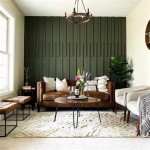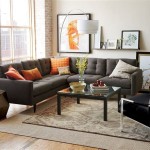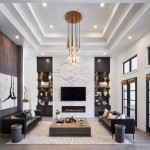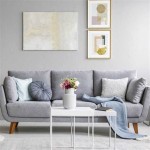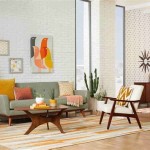Floor Plan Living Room Furniture Layout
Arranging living room furniture can be a challenge, but with a little planning, you can create a layout that is both functional and stylish. The first step is to consider the size and shape of your room. If you have a small living room, you'll want to choose furniture that is compact and doesn't take up too much space. If you have a large living room, you have more flexibility in terms of furniture selection.
Once you've considered the size of your room, you can start to think about the layout. There are a few different basic layouts that you can use:
- Conversational seating: This layout is designed to encourage conversation among guests. The furniture is arranged in a circle or square, with the seating facing each other.
- Focal point seating: This layout is designed to create a focal point in the room, such as a fireplace or television. The furniture is arranged around the focal point, with the seating facing it.
- Mixed seating: This layout is a combination of conversational and focal point seating. It allows you to create a space that is both functional and stylish.
Once you've chosen a layout, you can start to arrange the furniture. Here are a few tips:
- Start with the largest pieces of furniture. These pieces will form the foundation of your layout, so it's important to place them first.
- Create a focal point. If you have a fireplace or television, arrange the furniture around it to create a focal point.
- Leave enough space for walking. Make sure to leave enough space between pieces of furniture so that people can move around easily.
- Experiment with different arrangements. Don't be afraid to experiment with different furniture arrangements until you find one that you like.
By following these tips, you can create a living room furniture layout that is both functional and stylish.
Additional Tips for Arranging Living Room Furniture
Here are a few additional tips for arranging living room furniture:
- Use rugs to define spaces. Rugs can be used to define different areas in your living room, such as the seating area, the conversation area, and the play area.
- Hang curtains to add color and pattern. Curtains can add color and pattern to your living room, and they can also help to control the amount of light that enters the room.
- Use plants to add life to your living room. Plants can add life and color to your living room, and they can also help to purify the air.
- Accessorize with pillows, throws, and artwork. Pillows, throws, and artwork can add personality and style to your living room.
By following these tips, you can create a living room that is both functional and stylish.
:strip_icc()/100185277-720ea7a9044a47ed96ed87d0b159b6a1.jpg?strip=all)
Living Room Layouts To Make The Most Of Your Gathering Space

How To Arrange Furniture With A Floor Planning Tool

Furniture Placement In A Large Room How To Decorate Livingroom Layout Small Design Living
:strip_icc()/100185280-3e974cb7273c4fdd83cc0640ab45343e.jpg?strip=all)
Living Room Layouts To Make The Most Of Your Gathering Space

How To Arrange Furniture In A Family Room Decorate Living Arrangement Livingroom Layout Design

Living Room Floor Plans Types Examples Considerations Cedreo

Lay Out Your Living Room Floor Plan Ideas For Rooms Small To Large

12 Square Living Room Layouts Ideas For Your Home Roomhints

Furniture Arrangement Plan Living Room Google Keresés Layout Livingroom

How To Arrange Furniture With An Open Concept Floor Plan Setting For Four Interiors

